
table of contents
- 13 high-yielding blackberry varieties for the garden and balcony
- Old blackberry varieties
- New blackberry varieties - with and without thorns
- Blackberries with thorns
- Thornless blackberries
For a long time, blackberries were not particularly popular, as the bushes grew extensively and, thanks to the many spines, were difficult to harvest. For a few years now there have been some new breeds that are less vigorous, do not proliferate and also have only a few spines or are even entirely stingless. Nevertheless, some old varieties such as the popular 'Theodor Reimers' have lost none of their attractiveness.
13 high-yielding blackberry varieties for the garden and balcony
Whether old or new varieties: Blackberries are enjoying growing popularity again in the home garden. This is not least due to the many new breeds, which are often less vigorous and but are stingless - but their fruits now taste just as good as the wild ones Archetypes. Here we introduce you to 13 of the most popular types for gardening and container management.
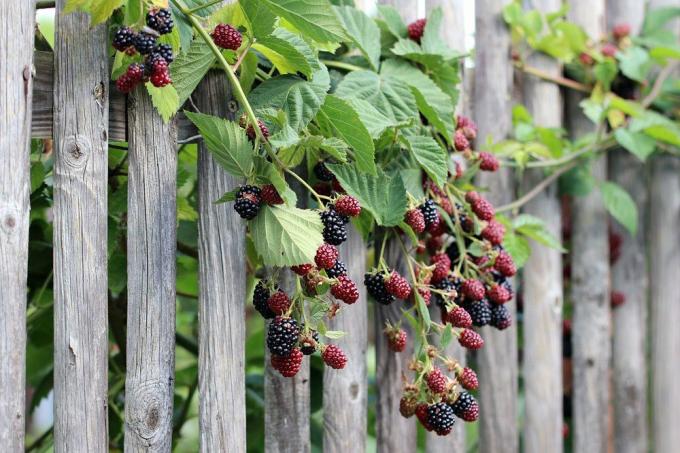
Old blackberry varieties
Old blackberry varieties can hardly be found in stores these days - with two exceptions, the two tried and tested varieties 'Theodor Reimers' and 'Wilsons Früh'. These are still in great demand today due to their robust health and aromatic fruits.
'Theodor Reimers'
'Theodor Reimers' is one of the most popular blackberry varieties because it delivers a consistently high yield over a very long period and delights with sweet, aromatic fruits. In view of the advantages, some will surely overlook the rather strong thorns (which are actually spines) compared to other species.
- Thorns: yes, strong
- Growth: upright, shrub-like
- Growth height: up to 150 centimeters
- Spread: up to 250 centimeters
- Flowering period: June to July
- Harvest time: July to mid-September
- Fruits: black, sweet, very aromatic
- Special features: productive, well winter hardy
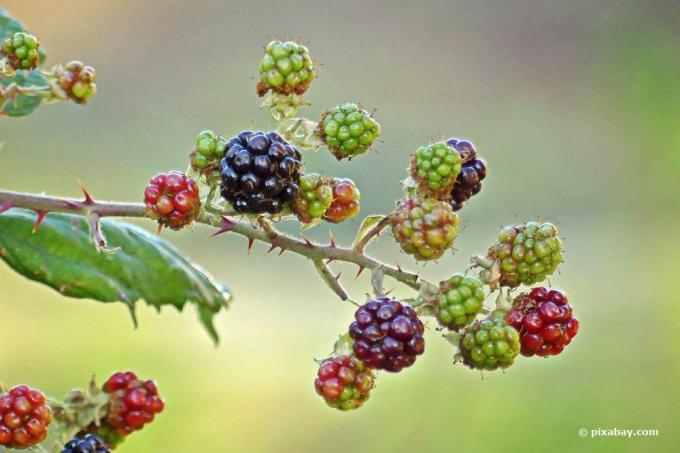
'Wilson's Morning'
The classic was bred in the USA as early as 1854 and has not lost its popularity since then - on the contrary, because the old variety belongs to the small-stature species that cultivate on the balcony even when there is little space and even in the tub permit. A trellis is an advantage.
- Thorns: yes
- Growth: shrub-like, remains small
- Growth height: up to 150 centimeters
- Spread: between 100 and 150 centimeters
- Growth rate: between 50 and 120 centimeters per year
- Flowering period: June to July
- Harvest time: late July to mid-August
- Fruits: sweet, black-red to black, long-oval
- Special features: suitable for keeping in a bucket
New blackberry varieties - with and without thorns

New blackberry varieties are always stingless? This assessment is not entirely correct, because some modern breeds come with a more or less strong thorn. Those who prefer to pick the sweet fruit without the risk of injury can use stingless species. In the past, these were considered to be very tasteless, a prejudice that has persisted to this day. However, the newer stingless varieties are in no way inferior to those with thorns in terms of aroma and sweetness.
Blackberries with thorns
In this section you will find both vigorous varieties for the garden as well as blackberry specialties that remain small for the container culture.
'Baby Cakes'
This is a very special new breed that was specially selected for pot culture. The blackberry plant looks like one Blueberry bush and therefore fits easily on every balcony. However, the yield is significantly lower than with other varieties, which is why keeping them is basically only worthwhile as a hobby for snacking.
- Thorns: almost thornless
- Growth: compact, remains small
- Growth height: up to 100 centimeters
- Spread: up to 100 centimeters
- Flowering period: June to July
- Harvest time: July to August
- Fruits: large, black, intense blackberry taste
- Special features: ideal for buckets and balconies
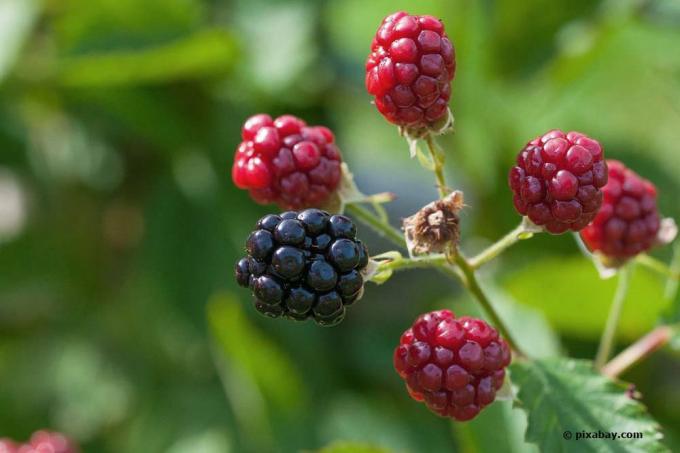
'Kiowa'
'Kiowa' is one of the newer blackberry varieties. It is vigorous and healthy, but quite susceptible to frost. Cultivation is worthwhile because of the very large, firm and tasty fruits. These are wonderfully suitable for fresh consumption, but also for preserving or preserving. for further processing.
- Thorns: yes, but small
- Growth: upright
- Growth height: up to 200 centimeters
- Spread: up to 100 centimeters
- Flowering period: June to July
- Harvest time: late July to August
- Fruits: remarkably large, sweet and sour in taste, black
- Special features: suitable for keeping in buckets, winter protection required
'Primocane Reuben'
In contrast to other blackberry varieties, this autumn blackberry bears its fruit on the annual shoots. It is also well suited for a bucket culture.

Growth: strong, upright
Growth height: up to 300 centimeters
Spread: up to 180 centimeters
Flowering period: June to July
Harvest time: beginning of September to beginning of October
Fruits: large, black, elongated, sweet, aromatic
Special features: self-fruiting, carries on the annual shoot
'Tayberry Medana'
Do blackberries have to be deep black? Not this one! Some newer varieties such as 'Tayberry Medana' surprise with particularly large, purple-red fruits when ripe. It is a cross between raspberry and blackberry and combines the positive properties of both species. The plant is quite undemanding and well hardy.
- Habit: shrub-like, forms long canes
- Growth height: up to 180 centimeters
- Spread: up to 250 centimeters
- Flowering period: April to May
- Harvest time: late June to August
- Fruits: large, red, sweet and sour
- Special features: cross between black and raspberry

Tip: The 'Buckingham Tayberry' variety is also a crossbreed product and is filled with delicious, red fruits. Here the fruits are visually reminiscent of large raspberries, but taste like sweet blackberries.
Thornless blackberries
Blackberries without thorns offer a great advantage over their prickly relatives: They can be harvested without having to worry about your clothes or even your skin. We present the best varieties for the home garden in this section. Our favorites provide a high yield of aromatic fruits.
'Black Satin'
The easy-care blackberry is also suitable for smaller gardens due to its rather low growth. It also scores with a very long harvest time.
- Growth: shrubby
- Growth height: up to 150 centimeters
- Spread: up to 150 centimeters
- Flowering period: June to July
- Harvest time: beginning of August to beginning of October
- Fruits: very large, black, juicy, sour
- Special features: long harvest time
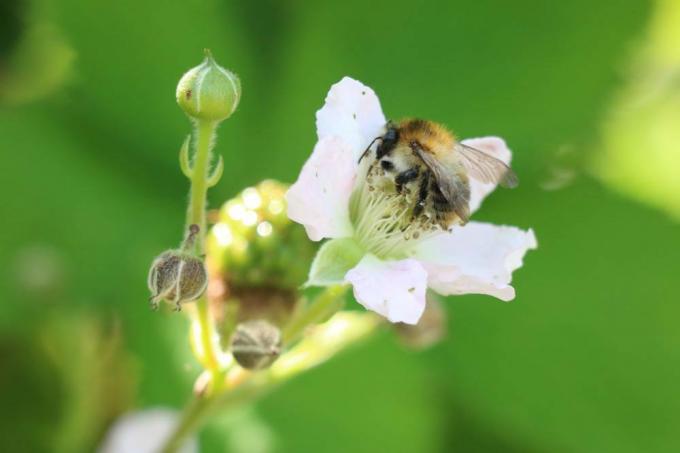
'Choctaw'
This strain is currently one of the earliest on the market. It is best to combine it with a later ripening, so you can nibble on delicious fruits from July to autumn.
- Growth: upright, shrub-like
- Growth height: up to 200 centimeters
- Spread: up to 100 centimeters
- Flowering period: late May to June
- Harvest time: mid-July to August
- Fruits: very large, sweet
- Special features: winter protection advisable
,Jumbo'
Due to the particularly large fruits, the blackberries 'Jumbo' are one of the most popular varieties. In addition, the plant delivers high yields and is thornless - perfect for every blackberry lover. The only disadvantage is the low tolerance to frost, which is why winter protection is essential.

- Growth: strong, vigorous
- Growth height: up to 150 centimeters
- Spread: up to 150 centimeters
- Flowering period: June to July
- Harvest time: August to September
- Fruits: very large, black, sweet and sour in taste
- Special features: productive
'Loch Ness'
This medium-sized growing variety provides a lot of large and tasty fruits. 'Nessy', as it is sometimes called, is one of the best thornless blackberries, which is why it is worth cultivating despite its susceptibility to upsetting or downy mildew.
- Growth: shrubby
- Growth height: up to 160 centimeters
- Spread: up to 150 centimeters
- Flowering period: June to July
- Harvest time: mid-July to September
- Fruits: black, sweet and sour
- Special features: very productive variety
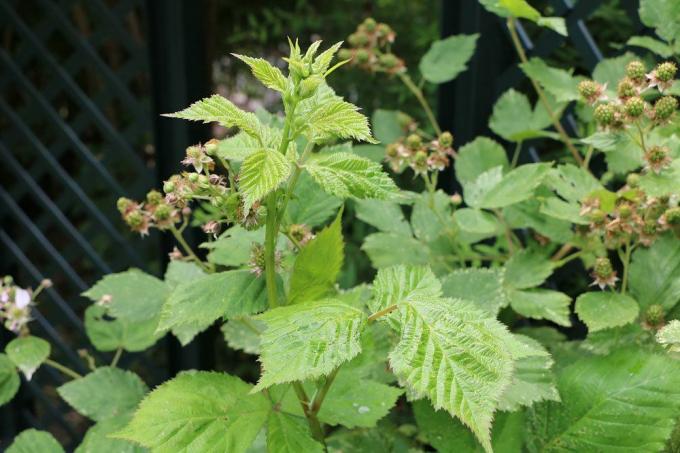
Tip: The variety 'Loch Tay' is related to 'Loch Ness', but produces smaller fruits. In addition, the harvest period is significantly shorter. Nonetheless, the berries taste very aromatic and they ripen a little earlier.
'Navaho'
'Navaho' is one of the most popular blackberry species, after all, you don't only harvest here in summer! A second harvest of the aromatic fruits is often possible between September and October.
- Growth: upright
- Growth height: up to 200 centimeters
- Spread: up to 130 centimeters
- Flowering period: beginning of June to end of July
- Harvest time: July to October
- Fruits: large, black, sweet and aromatic
- Special features: very resistant to diseases
'Oregon Thornless' (also 'Thornless Evergreen')
Among the thornless blackberries, 'Thornless Evergreen' is one of the most popular varieties, as it convinces with numerous, aromatic fruits.

- Growth: upright
- Growth height: up to 200 centimeters
- Spread: up to 150 centimeters
- Flowering period: June to July
- Harvest time: late August to mid-October
- Fruits: black, sweet and sour, storable
- Special features: self-fruiting, evergreen
'Thornfree'
Thornfree blackberries are best harvested when the fruits are fully ripe and soft. Before that, they taste quite sour, still firm. In any case, the taste is not very aromatic compared to other species presented here, but the variety scores with a high, continuous yield from the second year of standing. It is best to cultivate 'Thornfree' in a mild climate, as this is where the aroma develops best.
- Growth: strong, creeping
- Growth height: up to 500 centimeters
- Spread: up to 150 centimeters
- Flowering period: June to July
- Harvest time: mid-August to the end of September
- Fruits: black-red, sweet-sour
- Special features: does not form runners
Tip: The sugar blackberry 'Asterina' provides particularly sweet fruits. This variety is also vigorous, robust and less susceptible to diseases. It is very suitable for those with a sweet tooth who prefer to enjoy the berries fresh from the bush.



